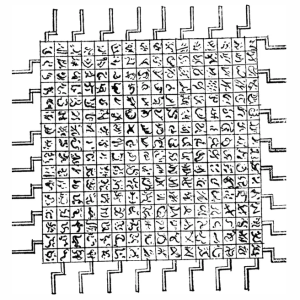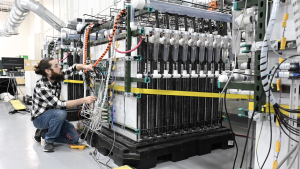“Self-healing concrete”

Facade of the Pantheon, with the Pantheon obelisk
By Scott Hamilton
I came across one of the most interesting ancient technologies so far last week. Scientists at Michigan Institute of Technology were studying samples of concrete taken from ancient structures in Rome and made a fascinating discovery. The concrete used in these ancient structures that have stood the test of time, some lasting more than 2000-years, actually repairs itself. The ancient Romans used a special mix of wood ash, lime and crushed stone to create a blend of concrete that would repair its own cracks.
I got to thinking hard about this and wondered what other things we lost with the overthrow of the Roman empire. Our concrete today is reinforced with steel, lab-tested, and specially engineered to hold up to extreme pressures and varying environmental conditions, but still only lasts, at most, 50 years. If we put our modern concrete on our roads, it barely lasts a single Missouri winter. So what did the ancient Romans do that was so different from how we make our concrete today and could we adapt some of their techniques to improve our structures? These are the questions being raised by this recent discovery.
So how exactly does the Roman concrete heal itself from cracks caused by water intrusion, freeze and thaw? As it turns out, the main thing that destroys modern concrete actually made this ancient concrete stronger. The blend of lime and wood ash, when mixed with the sea water, created a blend that would absorb moisture and expand, but just enough to fill any surface cracks. This led to a concrete blend that would not crack and split from the freeze and thaw cycles, because water below the surface of the concrete was absorbed by the slat left behind in the concrete, both raising the freezing point so the water never froze and expanded, but also causing the lime and ash blend to expand, filling the crack that allowed the water to enter in the first place.
I did a quick study on wood ash a few years ago myself, after watching a Myth Busters episode where they demonstrated walking on fire. During the episode they showed that the thin coating of white ash on the over 2000 degree embers provided enough insulation to allow you to walk across the coals without burning your feet. This made me think that wood ash must have pretty amazing insulation properties. As it turns out uncompressed wood ash has a very high R-value; if you were to fill the voids in your walls with wood ash rather than fiberglass or foam insulation it would be much more efficient, but the problem is as the ash compresses, the R value decreases significantly. The trick becomes getting the right ratio of ash to lime and stone in the concrete to improve the insulation properties. As it turns out with the perfect ratios you can improve the insulative properties of concrete by 20% with the addition of wood ash.
However, there is a much more important thing that happens when you add wood ash to concrete. It causes the concrete to become harder, more compact and more absorbent. Concrete with high levels of wood ash can absorb more water, making it really great for outdoor surfaces. The other thing that happens is that the concrete is less likely to crack from water penetration because the concrete absorbs the water equally throughout the structure, causing consistent expansion and contraction during the freeze and thaw cycles, resulting in fewer cracks. If you add to this mixing the concrete with sea water, you increase the ability for the concrete to absorb even more water. This is the secret behind the ancient Roman concrete.
There are two main reasons we don’t use these techniques in modern concrete. The first is the corrosive nature of both wood ash and sea-water. The two main additives of the self-healing concrete increase the oxidation of metals that come in contact with the blend. All our modern structures utilize steel rebar to reinforce the concrete structures and utilize steel bolts and cables for connecting other materials to the concrete. The corrosive nature of the ancient concrete would speed up the decay of the underlying steel structure and cause premature failure of our modern structures. So we would actually make our buildings less structurally sound by adding the self-healing ingredients.
What we don’t know yet, and I believe would be a great next stage of the research, is if the addition of less corrosive salts that lower the freezing point of water and cause increased water absorption would also have the effect of self-healing cracks in the concrete surface. If so, we may be on to a new concrete that would eliminate pot-holes in our roads. Could you imagine paving the streets in your town with a concrete that filled its own holes and cracks every time it rained? These would be miracle streets, but I fear we are decades away from developing something the ancient Romans had thousands of years ago. Until next week stay safe and learn something new.
Scott Hamilton is an Expert in Emerging Technologies at ATOS and can be reached with questions and comments via email to shamilton@techshepherd.org or through his website at https://www.techshepherd.org.






